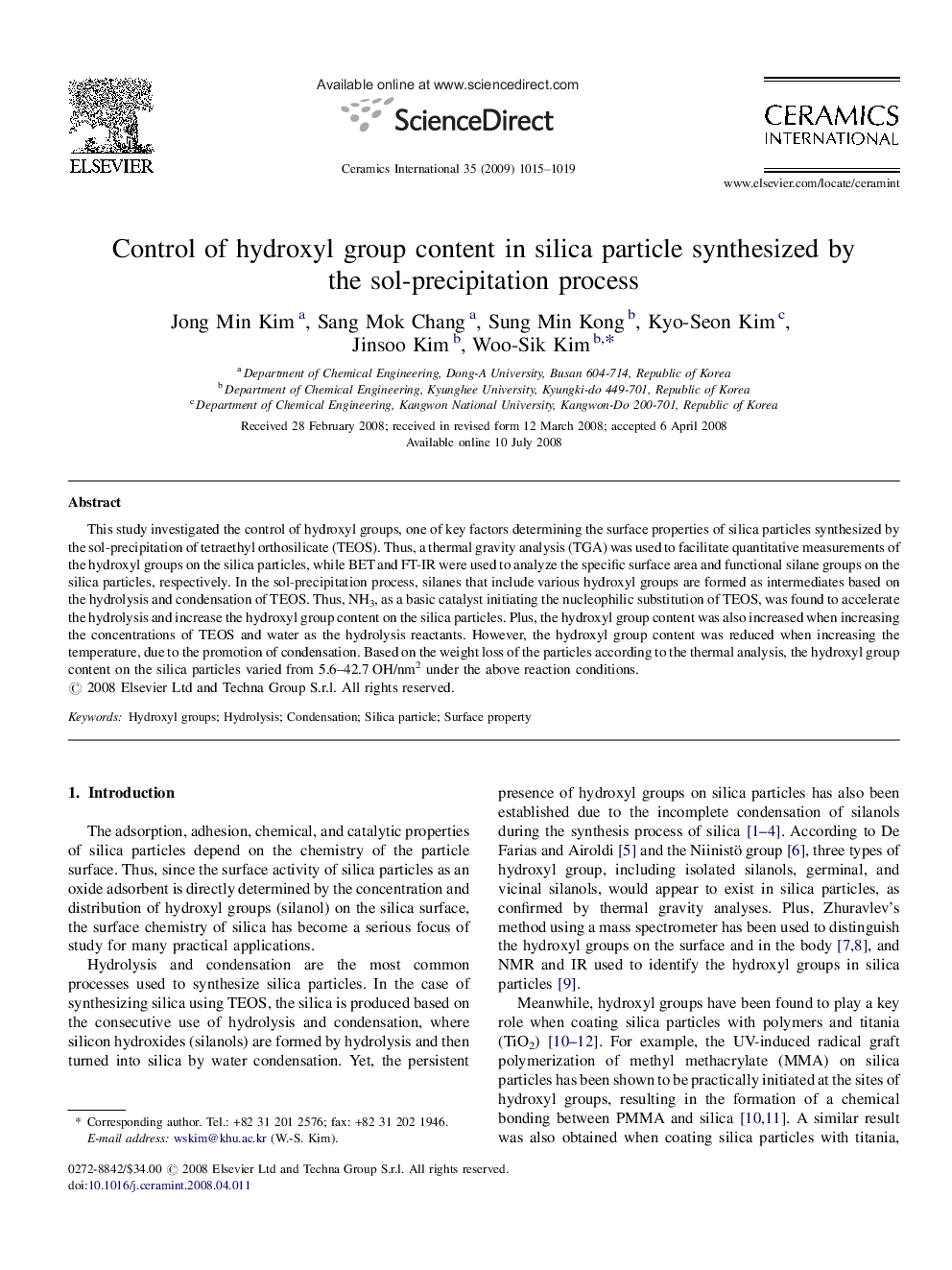| Article ID | Journal | Published Year | Pages | File Type |
|---|---|---|---|---|
| 1463651 | Ceramics International | 2009 | 5 Pages |
This study investigated the control of hydroxyl groups, one of key factors determining the surface properties of silica particles synthesized by the sol-precipitation of tetraethyl orthosilicate (TEOS). Thus, a thermal gravity analysis (TGA) was used to facilitate quantitative measurements of the hydroxyl groups on the silica particles, while BET and FT-IR were used to analyze the specific surface area and functional silane groups on the silica particles, respectively. In the sol-precipitation process, silanes that include various hydroxyl groups are formed as intermediates based on the hydrolysis and condensation of TEOS. Thus, NH3, as a basic catalyst initiating the nucleophilic substitution of TEOS, was found to accelerate the hydrolysis and increase the hydroxyl group content on the silica particles. Plus, the hydroxyl group content was also increased when increasing the concentrations of TEOS and water as the hydrolysis reactants. However, the hydroxyl group content was reduced when increasing the temperature, due to the promotion of condensation. Based on the weight loss of the particles according to the thermal analysis, the hydroxyl group content on the silica particles varied from 5.6–42.7 OH/nm2 under the above reaction conditions.
